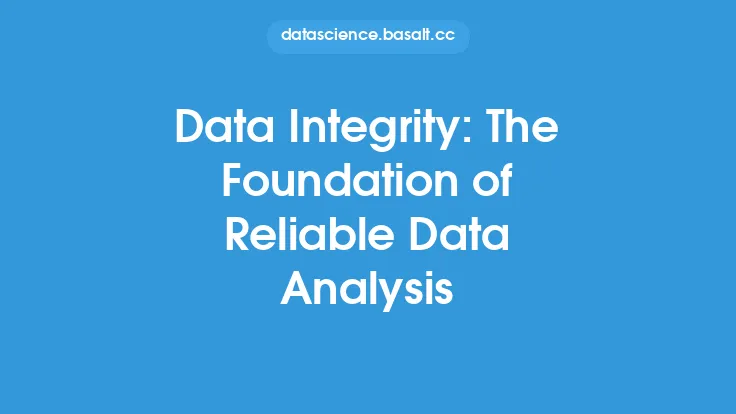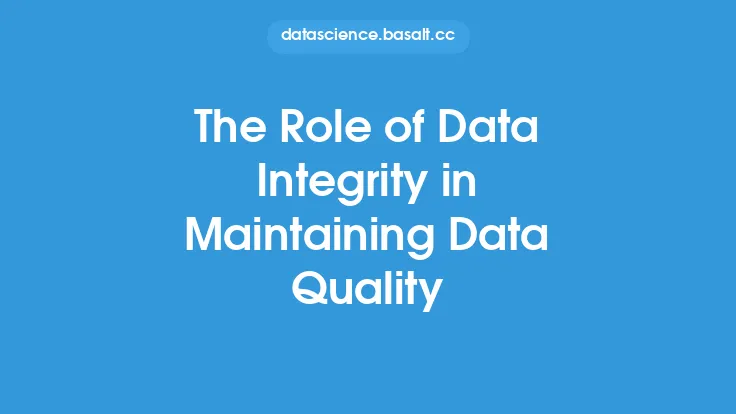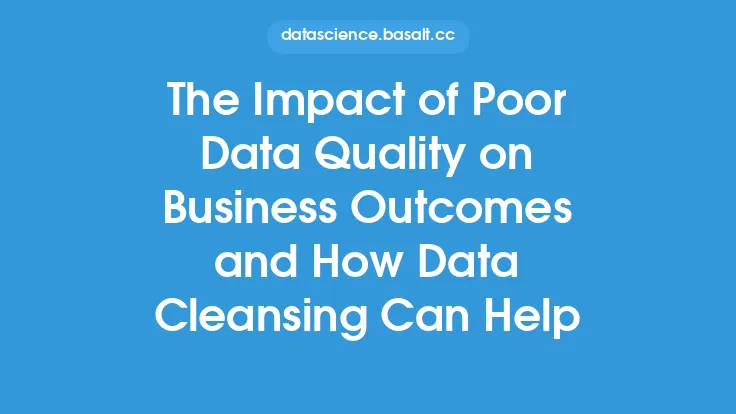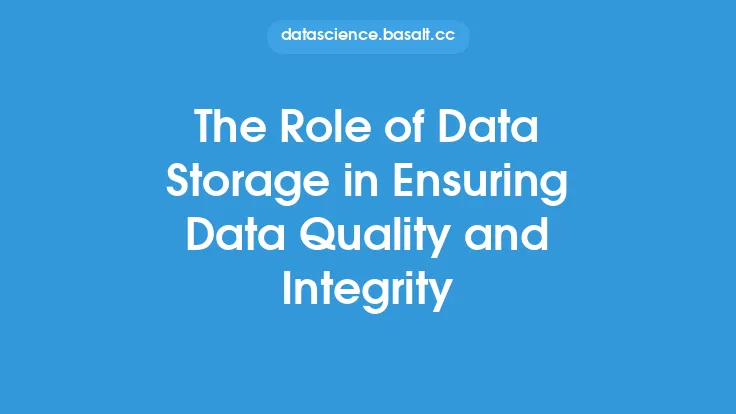Poor data integrity can have far-reaching consequences, affecting not only the accuracy of analysis and decision-making but also the overall reliability and trustworthiness of an organization's data assets. When data is incomplete, inaccurate, or inconsistent, it can lead to a range of problems, from minor inconveniences to major disasters. In this article, we will explore the consequences of poor data integrity, highlighting the lessons learned from real-world examples and providing insights into the importance of maintaining high-quality data.
Introduction to Data Integrity Consequences
Data integrity refers to the accuracy, completeness, and consistency of data. When data integrity is compromised, it can lead to a range of consequences, including incorrect analysis, poor decision-making, and reputational damage. Poor data integrity can arise from various sources, including human error, system glitches, and inadequate data management practices. For instance, a simple typo in a customer's address can lead to failed deliveries, while a more significant error in financial data can result in incorrect financial reporting.
The Impact on Business Decision Making
Poor data integrity can have a significant impact on business decision-making. When data is inaccurate or incomplete, it can lead to incorrect conclusions and poor decisions. For example, a company may make investment decisions based on faulty market research or sales data, resulting in financial losses. Similarly, poor data integrity can lead to incorrect risk assessments, resulting in unforeseen consequences. In the financial sector, poor data integrity can lead to non-compliance with regulatory requirements, resulting in fines and reputational damage.
Technical Consequences of Poor Data Integrity
From a technical perspective, poor data integrity can lead to a range of consequences, including data inconsistencies, errors, and contradictions. For instance, duplicate records, inconsistent formatting, and missing values can all compromise data integrity. Additionally, poor data integrity can lead to data quality issues, such as data duplication, data redundancy, and data inconsistency. These issues can be particularly problematic in large datasets, where errors can be difficult to detect and correct.
The Role of Data Validation and Verification
Data validation and verification are critical components of maintaining data integrity. Data validation involves checking data for accuracy and completeness, while data verification involves ensuring that data is consistent and accurate. These processes can help identify errors and inconsistencies, ensuring that data is reliable and trustworthy. For example, data validation can involve checking data against predefined rules, such as format checks or range checks, while data verification can involve comparing data against external sources, such as reference data or third-party data.
The Consequences of Poor Data Integrity on Data Analysis
Poor data integrity can have a significant impact on data analysis, leading to incorrect conclusions and poor decision-making. When data is inaccurate or incomplete, it can lead to biased or misleading results, compromising the validity of analysis. For instance, poor data integrity can lead to incorrect statistical analysis, resulting in incorrect conclusions about trends, patterns, and correlations. Additionally, poor data integrity can lead to incorrect data visualization, resulting in misleading or confusing visual representations of data.
Real-World Examples of Poor Data Integrity Consequences
There are many real-world examples of the consequences of poor data integrity. For instance, in 2019, a major airline experienced a data breach, resulting in the exposure of sensitive customer data. The breach was attributed to poor data integrity, including inadequate data validation and verification. Similarly, in 2018, a major financial institution experienced a data error, resulting in incorrect financial reporting. The error was attributed to poor data integrity, including inadequate data quality checks and inadequate data management practices.
Best Practices for Maintaining Data Integrity
Maintaining data integrity requires a range of best practices, including data validation, data verification, and data quality checks. Additionally, organizations should implement robust data management practices, including data governance, data security, and data backup and recovery. Furthermore, organizations should invest in data quality tools and technologies, such as data profiling, data cleansing, and data transformation. By implementing these best practices, organizations can ensure that their data is accurate, complete, and consistent, reducing the risk of poor data integrity and its consequences.
Conclusion
In conclusion, poor data integrity can have far-reaching consequences, affecting not only the accuracy of analysis and decision-making but also the overall reliability and trustworthiness of an organization's data assets. By understanding the consequences of poor data integrity and implementing best practices for maintaining data integrity, organizations can reduce the risk of errors, inconsistencies, and contradictions, ensuring that their data is accurate, complete, and consistent. Whether it's through data validation, data verification, or data quality checks, maintaining data integrity is critical for ensuring the reliability and trustworthiness of an organization's data assets.





